Get a cup of coffee folks, uncle papaw is going to ramble on about audio & psychology today.
A recent episode of the popular JHS Pedals show hosted by founder Joshua Heath Scott featured a game where a “contestant” attempted to identify various high-end pedals vs low-cost clones in a blind listening test where the controls of each pedal are manipulated while the contest plays a guitar through them. The contestant was an experienced musician (and, I believe, one of the staff techs who worked at the company) who prepared for the test in advance by listening to a range of pedals at the shop and even took a course on critical listening.
Even with a 50% chance of choosing the right device, the contestant could not consistently tell the difference. While a population (P) of one is far from the minimum valid sample size for social research, the results indicate that, where the pedal was the only experimental variable, the subject could not reliably identify the device by the audio output alone, including models that the contestant had used extensively. The price differentials between the pedals were substantial. One of the examples (The Klon Centaur) was several thousands of dollars more than the cheap knock off.

Josh, in his usual wry, facetious style mumbled something about “confirmation bias” and encouraged viewers to look up the phenomenon if they weren’t familiar with it. There’s a history of research related to confirmation bias and the related concepts of “placebo” and “nocebo” effects, where a variable impacts the results: a description of a non-existent quality or attribute, or a visual cue such as the design, GUI (if it’s software), packaging, an inflated Manufacturer Suggested Retail Price (MSRP) or market price. Priming a user’s expectations with fact or fiction or a few extra db of volume can be enough to sway perception.
I’ve pondered this interesting phenomenon over the years on everything from how source, setting and expectation influences our opinions on a given piece of music to the differences between microphones and high-end vs. low-end audio equipment and processing. I’m not immune to confirmation bias – none of us are. Being aware of it helps us maintain skepticism. We can employ various techniques to minimize it. As I’ve gained more experience and humility in my journey composing, performing, recording and mixing audio, I’ve developed a general rule of thumb, or a cognitive bias of my own, that passionate opinions can form around insubstantial or illusory differences.
When we hear or read something from an authoritative source, or a random anecdotal review, it can significantly bias our perception, especially if we lack enough first hand experience to draw our own independent conclusions. We’ve all gone shopping for something we don’t know enough about to feel confident in our decision, and we are often consciously or subconsciously persuaded by marketing, brand awareness and rumor, even in the face of direct evidence to the contrary.
I’m sure we all can remember buying a record in our youth that our social group thought was “amazing” and quietly went along with the crowd even though we privately didn’t understand the appeal. Back in the old days, you could get into a person’s car and they usually had a box or case of personal music. I was usually more impressed when, instead of a, “hey, look, I’m with the cool crowd” collection of conspicuous choices, I found uncool guilty pleasures like cheesy pop or country titles from childhood, some old family favorites, classical, jazz, “new-age” or something I had never heard of. Because people usually respond to the prompt, “what music are you in to?” with, “oh, a lot of different stuff,” I learned to take a more specific approach, “what album or song do you think you have you listened to the most over the past year?” What we “like” involves a lot of complex interrelated variables including social influence, environment (hearing a new song with friends on a vacation drive), identification with an artist’s persona, and of course, our own unique imagination. The closest we may get to a truly “independent” taste might be a person who spends a lifetime completely sequestered from outside communication and a large diverse library of music without packaging – like a Chance Gardener character with a stack of records instead of a television set.
Anyway, I digress… Josh at JHS Pedals started his journey repairing and modifying his own pedals, and then sold modified pedals at the local guitar shop before designing his own. His boutique company has since made a significant mark in the industry thanks to his creativity and relaxed humor in his YouTube influencer game. His humble origins and self-effacing persona belie his understanding of applied electronic engineering and product development. If there’s a consistent theme in his video series, it’s that the world of guitar effects pedals is as much about consumer psychology as functionality. Josh is a collector who understands the collector’s compulsion, with an insatiable appetite to have the specific “thing” to put on his shelf (he has the box). In comparison, I might be described as a minimalist; I’ve never been a collector, but I empathize with people who find acquiring the “thing” or all the “things in a set” tremendously satisfying.
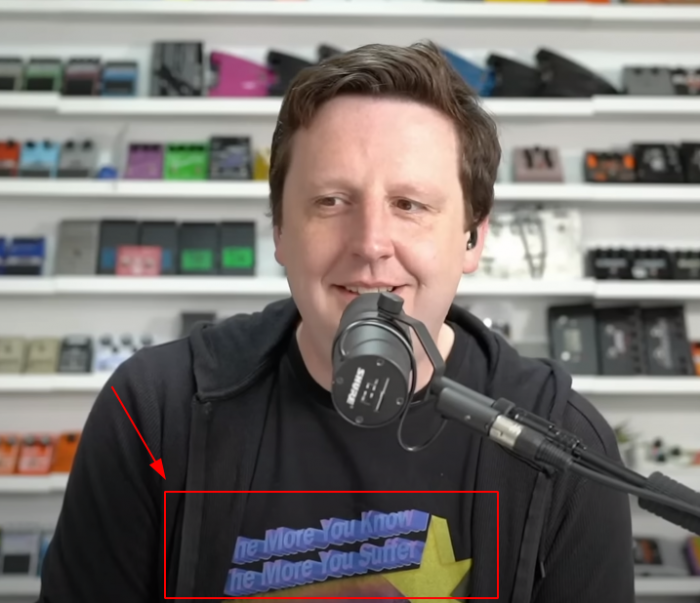
Josh regularly demonstrates cheap alternatives from brands like Berhinger (a company with a history of IP controversy) are functionally equivalent copies of high priced counterparts. Or, that widely shunned discontinued products on the used market are sleeper jems with unique potential (and their used market price usually increases after his videos are published). He understands that most guitar pedals are fancy colored boxes containing simple circuits and freely admits that many of the sacred collector’s items and even his own boutique products hand-assembled in the US are only minor variations of the same circuit designs you can buy for $25 on Amazon with the same semiconductor parts from the exact same factory. In other words, he knows that the box, not just the circuit matters to people.
If you don’t want to take his word for it, Brian at Wampler Pedals has some boring interesting breadboard comparisons of a wide range of components at various price points.
If you’re wondering, patent protection of circuits is increasingly rare and it’s challenging to detect and expensive to claim infringement, and given the schematics are often distributed by manufacturers for purposes of repair and troubleshooting, easy to copy or base a similar circuit on. Even without schematics, most guitar stompboxes can be reverse engineered. The challenges of international IP protection might be a good topic for a future article.
Josh recognizes that the realm of digital signal processing, or DSP, is a different engineering feat than soldering a few resistors and transistors together in a box. Barring ready off-the shelf ICs, designing and sourcing the manufacture of a custom integrated circuit is a capital intensive endeavor. I’ve been pleased to see him recently credit some of the significant groundbreaking contributions of Digitech’s DSP engineering from the 2000-2010s in the wake of a series of corporate mergers and acquisitions leading to the layoffs of the innovative engineers who designed their line of classic products. Many of those engineers went on to join (or start) other excellent companies.
Years of R&D and substantial capital investment went into Digitech’s Application Specific Integrated Circuit (ASIC) chips branded “AudioDNA.” The chips were designed to be a focused but flexible platform for highly efficient instrument DSP with optimal power consumption to compete with the revolutionary innovations from Line6 who wouldn’t market a floor pedal for two years. Being such a large initial investment, they had to order a large run of them, and as a result developed a lot of innovative and ridiculously affordable products based on them in the 2000s and 2010s. Digitech’s products were often dismissed because they were “not analog,” and thanks to their high volume chip strategy sold at a low price point. Their low margin/high volume multi-effects products suffered from cost cutting corners like cheap-looking plastic enclosures and clunky, non-intuitive button menu navigation that often required referencing a manual, but the capabilities of the chipset inside were an engineering marvel that rivaled their primary competitor, Line 6’s sound quality in many areas.
From a product management perspective, their entry level line was a Minimum Viable Product that sought to reduce the cost of every part of the product except the underlying ASIC chipset to maximize features (the analog devices the pedal could emulate) at the lowest possible price point. A $50 plastic stompbox convincingly emulating a wide range of highly prized effect pedals, amplifiers, cabinets and reverbs in stereo caused a fair share of cognitive dissonance among critics and consumers alike.
My early experiences with multi-effects units from the 90s were not great. I had the luxury of borrowing a “professional grade” midi-controlled guitar rack (ADA MP-1 with midi pedal, Alesis Midiverb, Crown power amp) from a friend for several months during my senior year of high school, and was impressed by the tremendous potential, despite the significant learning curve involved in programming it via limited push-button scrolling menus. In hindsight, I realize that early formative experience established a high tolerance for product feature complexity. Years later, wanting the same power without the budget, I fell for the “allure” of an affordable programmable “all in one” option and quickly came to the conclusion that it made my tube half-stack sound terrible, even when I tried running it through the effects loop via a long cable run.

However, my opinion of Digitech’s multi-effects products was forever changed during a local rock show around 2002/3 where a talented young guitarist was producing a huge and fantastic stereo guitar sound through the club PA that dwarfed the sound of his bandmate’s expensive miced tube amp. Peering over the edge of the stage I was surprised to discover it was one of the new “cheap” Digitech RP-50 mini multi-effects units running direct in stereo — a pedal widely dismissed by analog purists and most salespeople at your music store as a “practice pedal toy for budding guitarists.” In reality, it sounded astounding through a pro club PA mix because it was the very same DAC/DSP chip used in their flagship rack devices used by top studio artists and the second generation even featured licensed Lexicon “studio quality” reverbs on the chipset. I’ve owned three variations of that series over the years, and still use the swan song iteration, RP-360 in one of my live rigs. On three separate occasions audience members (probably guitarists) walked up on stage after a show asking about my rig, and each of them seemed crestfallen that I was running a low-price multi-effects DSP unit. I don’t care whether it sounds like XYZ amp, and no, it doesn’t have the detailed nuanced articulation or “sag” characteristics of a tube amp, I just like that it can approximate any sound I may need at ANY volume and I just have to hit one switch to completely change the effects parameters mid song. I own multiple quality tube guitar amplifiers, and have owned or played through a good range of tube backline gear in my lifetime. I lugged around heavy tube amps for years, and the Digitech is convenient, lightweight, versatile and sounds satisfactory in a live club mix.
So, back to our main point about confirmation bias… Psychologist Peter Watson came up with the term if not the concept itself in 1960. People have a tendency to cherry pick information that supports their own beliefs or confirms what they believe they already know or may know (like this article). It is also known as the observer-expectancy effect in experimental psychology when an experimenter unintentionally persuades participants to behave in a way that supports the hypothesis that is being tested.
The ambiguity effect is the inclination to avoid choices for which it is unclear whether a favorable or unfavorable consequence is more likely to occur. Many people find it difficult to tolerate unpredictable situations. Uncertainty and ambiguity are often subjectively synonymous with danger.
According to psychologist Jonathan Baron, there’s no substantial relationship between intellect and a propensity for confirmation bias. In fact, it’s possible to hypothesize that those with higher IQs are just better equipped to defend their bias. According to Wolfe & Britt (2008), participants’ perceptions of what makes a strong argument enable and sustain confirmation bias. Hence, the first filter on any novel incoming data is people’s over-reliance on their own perceptions of objectivity.
Our capacity to disagree with any opinion is undermined by our want to keep our friendships intact. Even seasoned listeners who may be aware of one another’s biases may hold back or temper their comments if they believe it will undermine the group’s cohesiveness. This is related to the concept of groupthink.
The sprawling public forum discussions over the years on Gearspace or Steve Hoffman’s Forum provide a lot of good examples of groupthink, ambiguity effect, confirmation bias and appeal to authority (a type of logical fallacy). These discussions are often low on empirical evidence and high on anecdotal evidence — and sometimes the participants are clearly, um, high. Participants demonstrate patterns familiar to social psychologists who study cognitive dissonance: evasion, rationalization, and realignment when confronted with evidence that contradicts their position, which threatens a person’s sense of self. After all, forums in the ancient Greek tradition are spaces that encourage debate and dissent in the spirit of democracy, inquiry and discourse.
So… what do we do? Well, it’s not in vogue much anymore, but the old Greek folks who invented that Democracy stuff also had an idea of using direct observation and measurement to prove a working hypothesis. It really took off again in the 18th century, and if you believe it, I hear that our grandparents put rockets into space and even developed tiny computers by measuring and collecting data, iterating on various hypotheses and proving their validity using a type of special math called statistical analysis. But seriously, it’s really quite refreshing to hang out with folks who embrace an empirical approach to problem solving. It certainly doesn’t solve all our problems, and isn’t necessarily good at answering ethical or spiritual questions, but it’s a tried and true methodology to minimize inherent bias and make stuff work better.

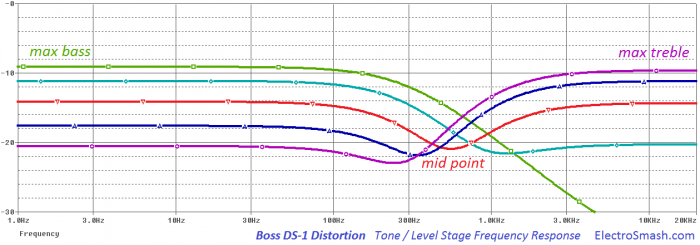
YouTuber Jim Lill, makes a compelling case that most of the perceptible “sound” of the typical amplified electric guitar is due to the physical moving components: the pressure and texture of human touch, the strings, coil input transducers (pickups), and most of all, the “voicing” of the speaker. The amplification stage doesn’t contribute as much as most people assume. Equalization and saturation characteristics are important, but there aren’t that many perceptible differences between a handful of saturation I/O schemes including hard, soft, symmetric and asymmetric clipping. Various tube amp topologies are indeed very nuanced, but many of the perceived differences are due to pre and post gain filtering, and equalization. Soft clipping is not a vacuum tube-specific or even a vacuum tube-inherent characteristic. In actual use, the circuitry as a whole determines the clipping characteristics, which can therefore range from extremely gentle to very strong. The same is true for circuits based on solid-state technology and vacuum tubes.

Engineer and Boston (band) mastermind Tom Scholtz demonstrated the principle of “big sound in a little box” in the 80s with the Rockman Sustainor and Rockman Guitar Ace portable, widely used in studios on multiplatinum albums. New York engineer B. Andrew Barta took this a step further in 1989 with the “SansAmp” solid state DI amp simulator, also widely used for forty years on top recordings. It has no ‘dedicated’ tube emulation, instead it has clever filtering and op-amp gain stages and an analog speaker-microphone simulation on the output.

A report by Cognitive Market Research indicates the market size of the guitar effects pedal industry was $3.2 billion in 2021 and forecasted to reach $5.7 billion by 2029. In many ways they are the ideal product thanks to their affordable average price and there being no limit to the number of different pedals a musician can potentially purchase in their lifetime, even if a significant number of them are arguably functionally redundant.
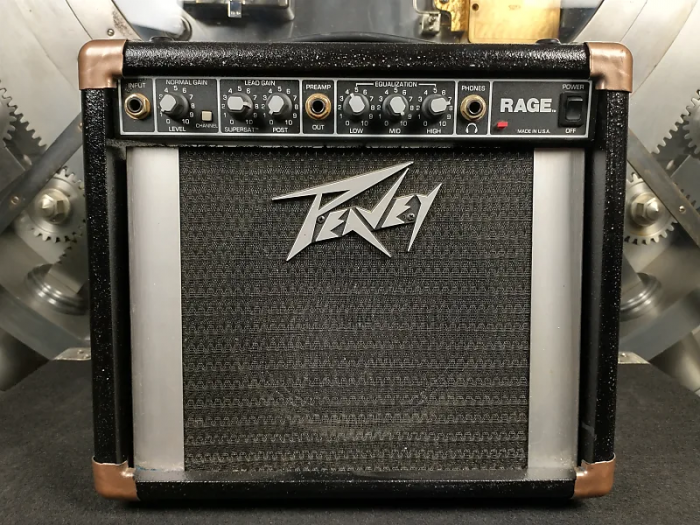
Imagine if you spent a year living in an analog recording studio with nothing else to do but record your own audio and listen to a large library of classic albums. How do you think your approaches to mixing would evolve? For many of us older non-digital natives, many of our developmental years involved hours of listening, not looking at screens. How sight influences our perception of sound is a topic for another day.
The guitar pedal market is probably one of the better examples of how psychology impacts perceived value, and it applies throughout the realm of audio processing for stage and studio. Software audio plugins are the pedals of the digital audio workstation. Amateurs and professionals alike tend to hoard them for the same reasons guitarists hoard pedals — variety, inspiration, confidence and the hope that one of them will provide that esoteric fairy dust that they can’t achieve using garden variety solutions. I suspect that some people are looking for a quick fix, others enjoy exploration and novelty, and many haven’t invested much time in critical listening skills and just use something because they read it was a good choice. There’s very good news for the latter market segment, the engineers at Izotope are constantly expanding the capabilities of their AI mixing tools. Eventually, you won’t have to bother with writing, performing or mixing at all. It can all be automated.
Since the 1990s, when Waves introduced their first groundbreaking equalizer plugin, the digital audio workstation running on a personal computer has rapidly evolved at the rate of Moore’s law, reaching functionally parity in many respects to the most advanced hardware consoles of the 80s and 90s, with features like transparent equalization, look-ahead compression and advanced gain and parameter automation. As early as the mid-2000s, the engineers at Waves were concerned that they had effectively solved all the mathematical problems necessary to achieve flawless audio processing for the needs of ITB production. It was only when product managers and salespeople, who talked with their customers, realized that the market actually desired the non-linear “imperfections” of analog equipment that the more cpu-intensive race to emulate and model hardware began.
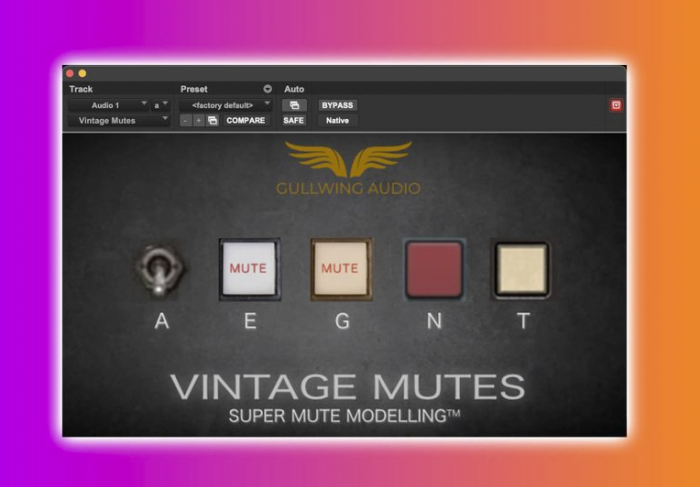
In other words, the engineers believed that because DSP algorithms had achieved results that were impossible in the analog domain the market would arrive at the logical conclusion that analog solutions were inherently inferior and destined for obsolescence. This is a really important point to consider the next time you open your preferred DAW software: the stock plugins are capable of doing things you simply cannot do with analog gear. Consider the stock compressor — if you had a time machine, a mix engineer from 1990 would consider its possibilities like something from Star Trek: a tool that achieves flawless, uncolored dynamic gain reduction with microsecond attack time, variable ratio, variable slope knee, input equalization, mix blend and sidechain input. A hardware unit of comparable quality and features would cost hundreds if not thousands of dollars. A typical ITB mix may use fifty or more instances of compression, often “stacked” in series. This would be unheard of without great cost and complex routing to external rack devices even on the best SSL consoles.
Consider the typical stock limiter, a device that, thanks to “look ahead” makes true peak brickwall limiting possible while minimizing unwanted distortion, especially when in conjunction with soft clipping.
Also consider the stock equalizer, with multiple bands of almost infinite frequency manipulation, and in many cases high resolution graphical analysis. In terms of feature potential, comparing it to a $5,000 Pultec (designed in the 1950s to be a transparent program equalizer) is like comparing a calculator to an abacus. If the Pultec’s major selling point over the decades was its lack of distortion and color (if that even makes sense when describing a phase cancelling passive equalizer), how is it $5,000 better than a plugin that is actually demonstrably transparent using the most precise measurement tools? Just look up the EQ curves achieved by the Pultec and move on.
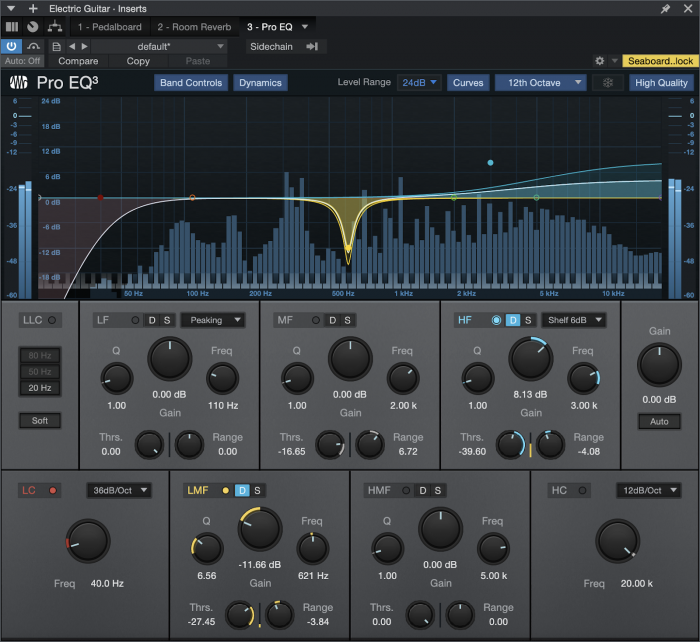
In combination with some reverb, choice saturation and the insane potential of automation on *every* parameter in your mix, your DAW’s stock compressor and EQ in conjunction with a professional grade audio interface with a lot of I/O routing hypothetically exceeds the feature capabilities of the best SSL console on the market. The lively debate on analog vs. digital summing over the years often boiled down to anecdotal evidence of preference or personal experience. Measurable evidence such as null tests only proved that known and expected differences between a mathematically predictable software and an unpredictable and difficult to measure analog device like a mix console exist due the millions of components in an analog device that are constantly and subtly changing due to temperature, time and radiation. Descriptors like “depth,” “space” and “color” are ambiguous and difficult to quantify. What’s known and measurable is that analog summing in consoles can and do often add complex desirable crosstalk or harmonic energy to the signal. Presonus and ProTools have variously attempted to analyze and address this to satisfy the market desire for those pleasing qualities.

The SM57 is an interesting and oft-cited example of a product that defies cost bias. It’s probably the most abundant microphone on the planet, they still only cost $100.00, and despite being more or less a commodity found in the PA “junk bag” of almost every music bar or club in the US, they are used in a wide range of critical studio applications where exotic high-price alternatives are readily at hand — everything from a snare drum to a Steinway piano can be pleasantly captured with that modest moving coil design.
Why? Because the Unidyne III capsule – a technology developed in 60s has a “musical” response that sounds good on just about everything: the midrange is forward, the presence boost is pleasant and the ultra high frequency roll off is forgiving. And yes, while it’s rarely your first choice due to its limited sensitivity, high frequency response and cardioid pattern, you can absolutely use them as drum overheads and on a wide variety of acoustic sources with satisfactory results. One of my first audio engineering projects was recording the band I was in back in 1998 using our own low budget analog gear because we had been burned too many times by the typical local studio experience, and we valued control and freedom far more than the risk of hiring the studios we could afford. Fortunately we had six SM-57s as part of the band PA and we used them for everything — and yes the response curve did cause build up, but it was attenuated using EQ. Due to my limited knowledge, I poured over the books available at the local university library and what scant information was available on the early Internet. I had to trust my ears via mid-grade headphones and mid-grade bookshelf speakers. While project studios are now the “of course” default for music production, that was definitely not the case in 1998 before the DAW based studio was affordable.
I’ve always been skeptical of the value differential of equipment. Maybe it’s because I was broke and struggling during my formative years, and could clearly hear the stark differences between the low end equipment I had and the high end equipment I longed for. As better sounding equipment became more affordable, it’s not that differences didn’t exist (they do), it’s that I was confident that the differences were less relevant to achieving satisfactory outcomes in modern popular genres where fidelity is less critical and even undesirable. The tried and true workhorses of a bygone era are fantastic kit: SM7Bs, AKG414s, Neumann U87, UA LA-2As, UA-1176s, Neve Preamps, etc etc. However, I don’t agree that such expensive equipment will make your next album sound ten to twenty thousand dollars “better” to the average listener than modern “prosumer” equipment in the hands of a capable and experienced engineer, a good band in a good acoustic space.
In other words, you could probably ask any “A-List” engineer/mixer today if they could make a great pop/rock record without all their elite studio equipment using a quick and dirty, “grab and go” portable laptop-based rig of mid-range “prosumer” gear in a great sounding space with a great sounding band — and based on the innumerable interviews I’ve read over the years — they would agree, because they probably have. They have enough on-the-job experience to trust their ears and know that the basic techniques of microphone placement, EQ, compression and saturation are far more critical to the final product than the price or brand name of the microphones, EQs and compressors employed. A-list audio engineers are mere mortals who worked hard and got lucky — and they turn to the tried and true high end gear they have access to because of confidence, predictability and confirmation bias, not because it makes a stark difference in the typical end product mix. If you have it, why wouldn’t you use it? At the end of the day, it makes them feel more confident that the signal path is high quality in their workflow so they can be productive and focus on making creative decisions. Professional mix engineers are usually working under tight budgets and deadlines and must leverage proven and efficient workflows.
Whether you’re working with modest low-cpu stock plugins or the latest generation elite UAD processing that painstakingly emulates the subtle non-linear nuances of hardware, satisfactory and even stellar results are possible. For every legendary classic album recorded in world class studios on best-in-class equipment, there’s a legendary classic album that was recorded under modest or even challenging circumstances on bargain or sub-par gear in a budget studio. Some of your favorite albums were probably engineered and mixed by uncredited and unsung staff engineers being paid an hourly or salary wage.
Professional reputations are at stake when years of evidence from double blind tests suggest substantial confirmation bias in both audio engineering and audiophile products. Differences undoubtedly exist in the realm of precision measurement, but when it comes to practical application, there are often too many confounding variables for the infinitesimal to matter subjectively, and there’s very little that something more fundamental like manipulating the source phase relationships and equalization can’t compensate for. In other words, moving the microphone a few centimeters or changing the sound source is usually more effective than running the signal through an expensive metal enclosure with a big name badge.
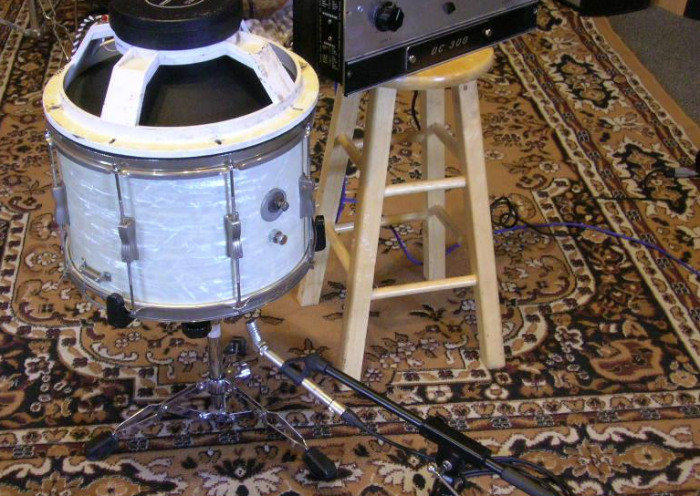
Similarly, over the years I’ve read a fair share of “insider” testimonials from well-regarded audio engineers and producers admitting to misleading clients on minor details about their “magic sauce” in order to deliver a satisfactory product for the producer or label. Examples range from the widespread use of triggers and triggered “impulse” ambiances on drum kits (Andy Wallace on Nevermind and RATM) — to reamping DI signals through software amps for guitarists who, despite swearing that software doesn’t compare, were none the wiser — to wholesale re-recording of parts by “ringers” or session players without the original member who may have been intoxicated during the session even being aware of it. And of course today, the practice of “quantizing” and “pitch correcting” is so widespread that it’s accepted as normal — even a standard “prep job” for assistant engineers in pop, hip-hop and country. This has been happening in various ways behind the scenes for half a century, usually after the “talent” leaves the studio and an often nameless faceless engineer and producer diligently works into the night, identifying ways to polish the turd of a recording by a group of musicians who don’t generate satisfactory sounds with their instruments.
Perhaps that’s why when we hear audio productions by engineers like Steve Albini, who eschew these widespread “cheats” as unethical and focus on capturing the audio in an honest way — if the band is good, you hear an excellent representation of a group of living performers in an acoustic space. If the band sucks, the record sucks, and it’s not Albini’s fault. He doesn’t polish turds. As a result, Albini is one of the last of the “true” audio recording engineers operating a full service studio, who’s role is to record your sound honestly in a wonderful acoustic space at ethical rates — not make your band sound like every other band that has passed through the doors.
